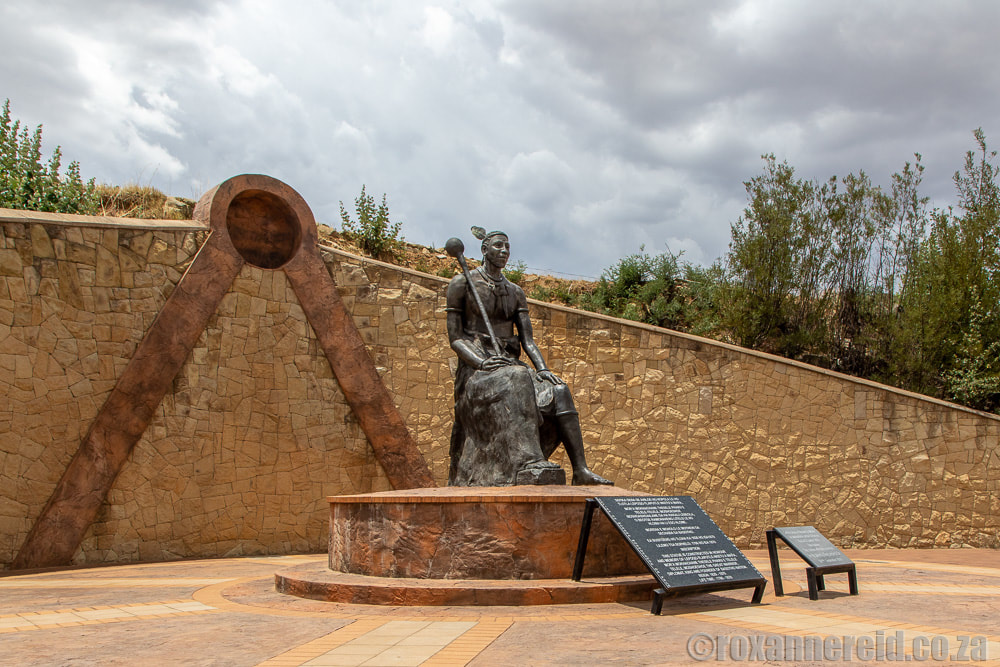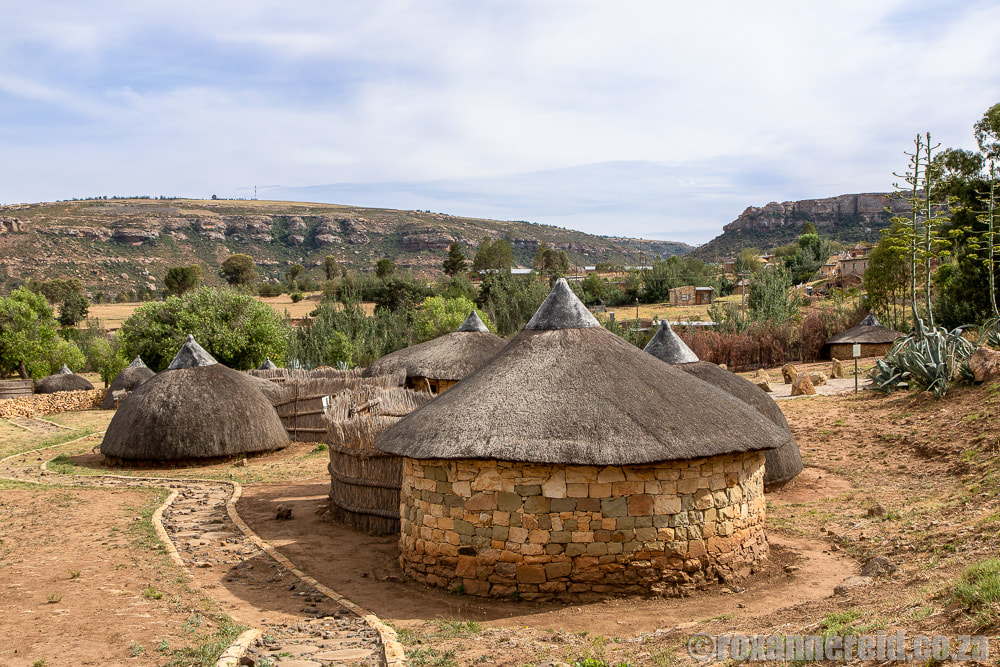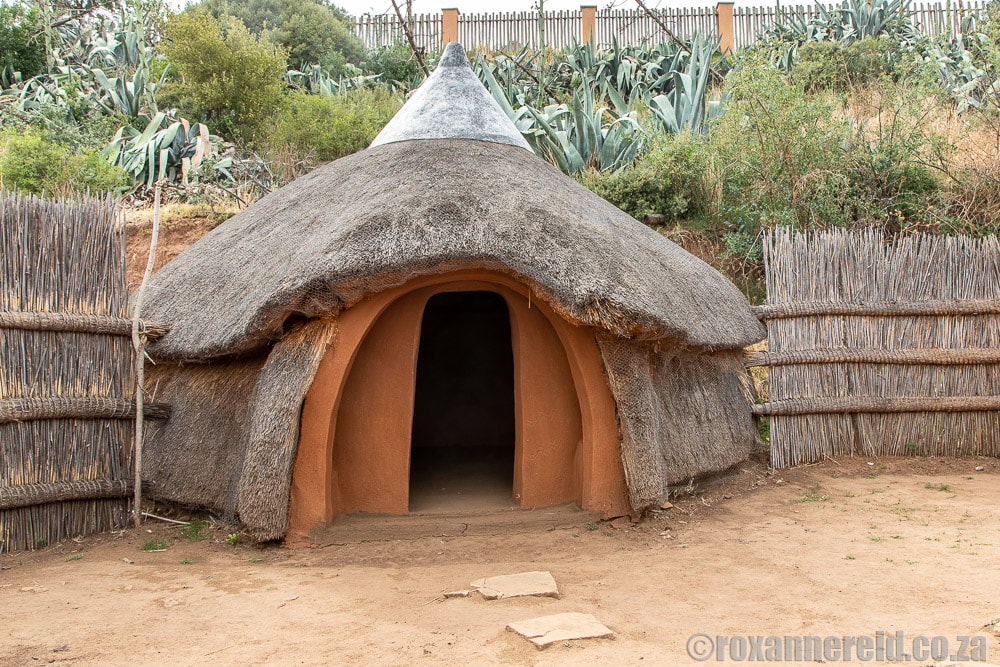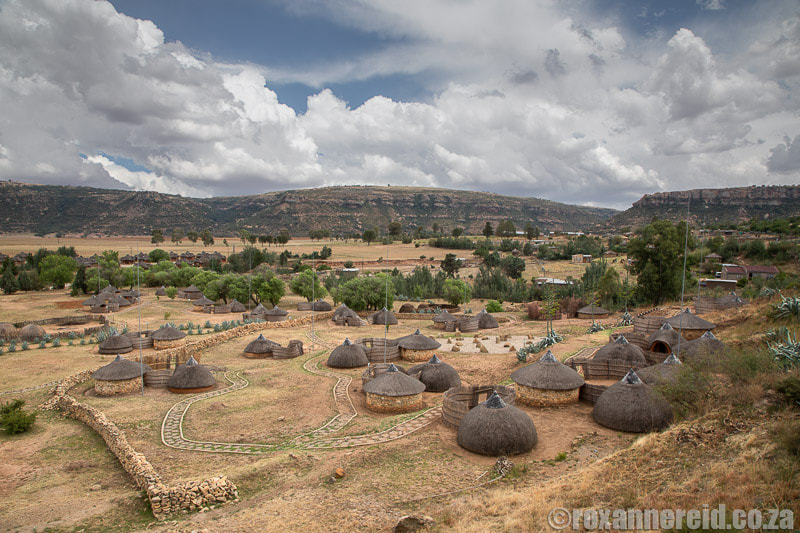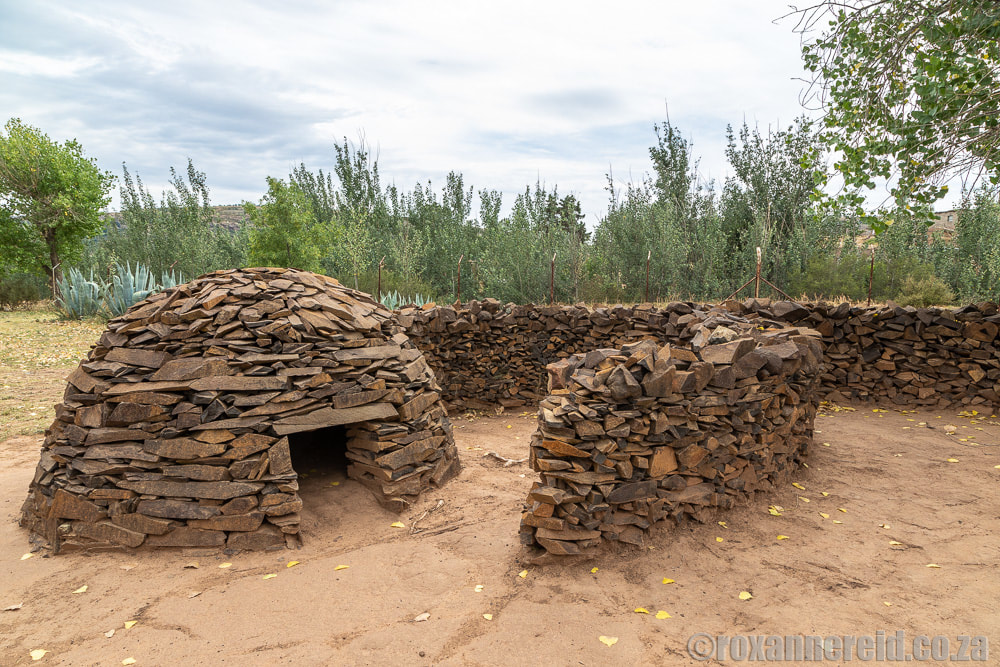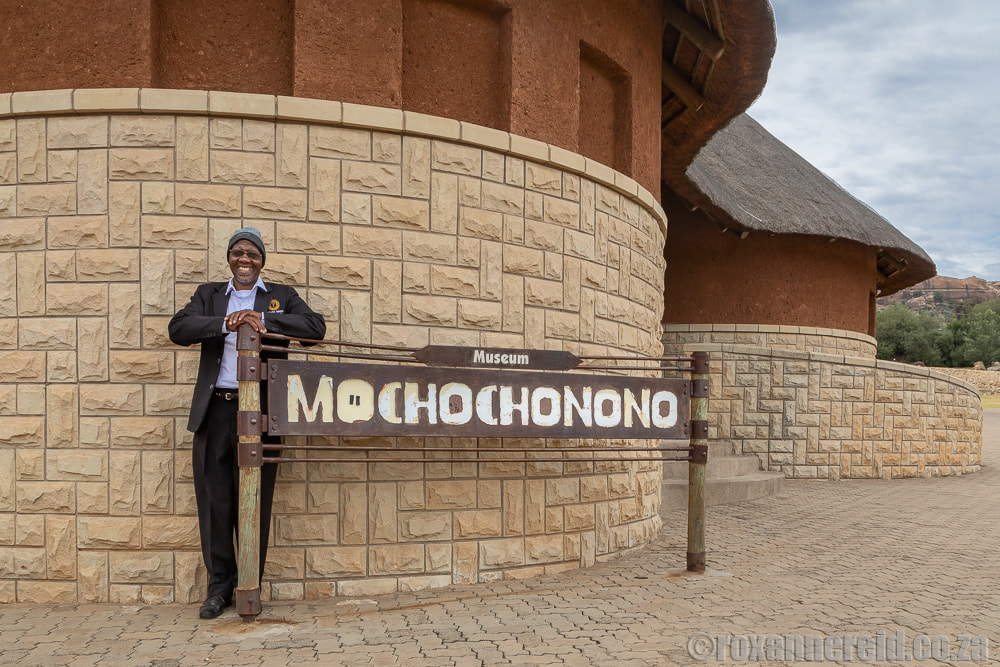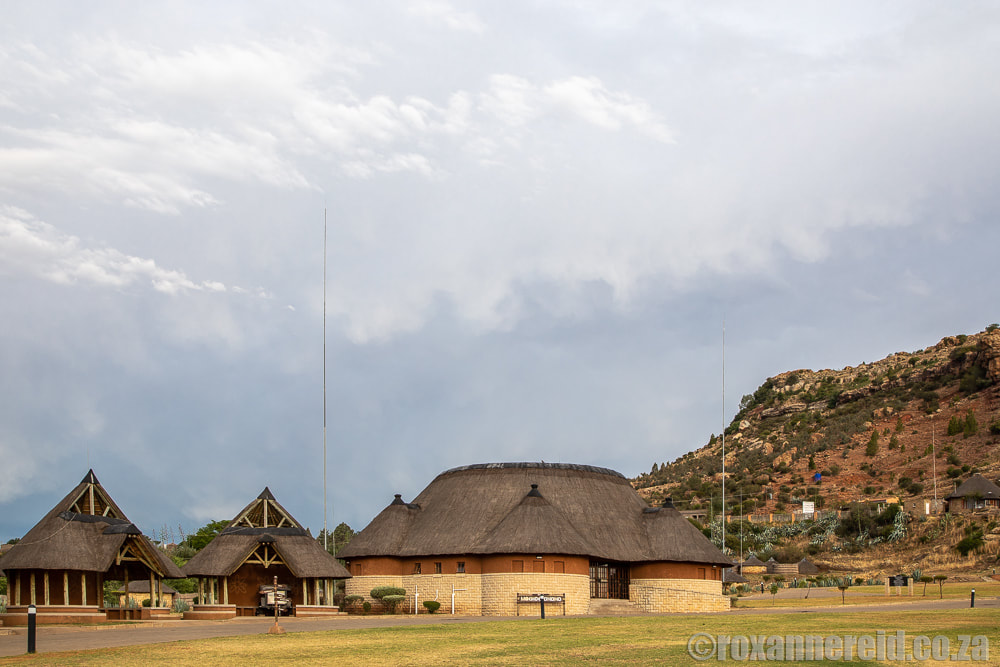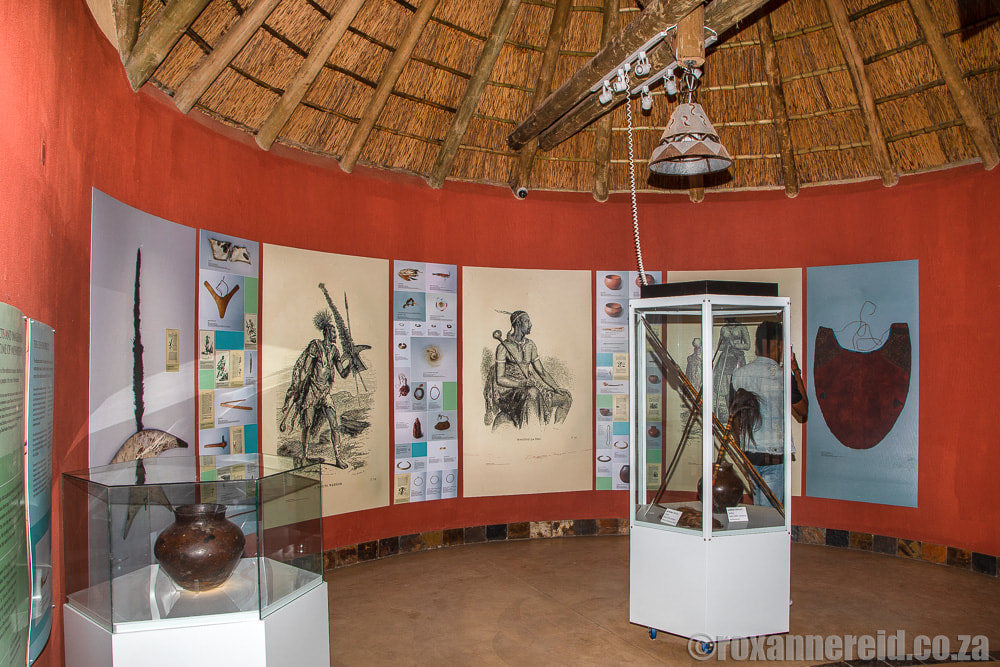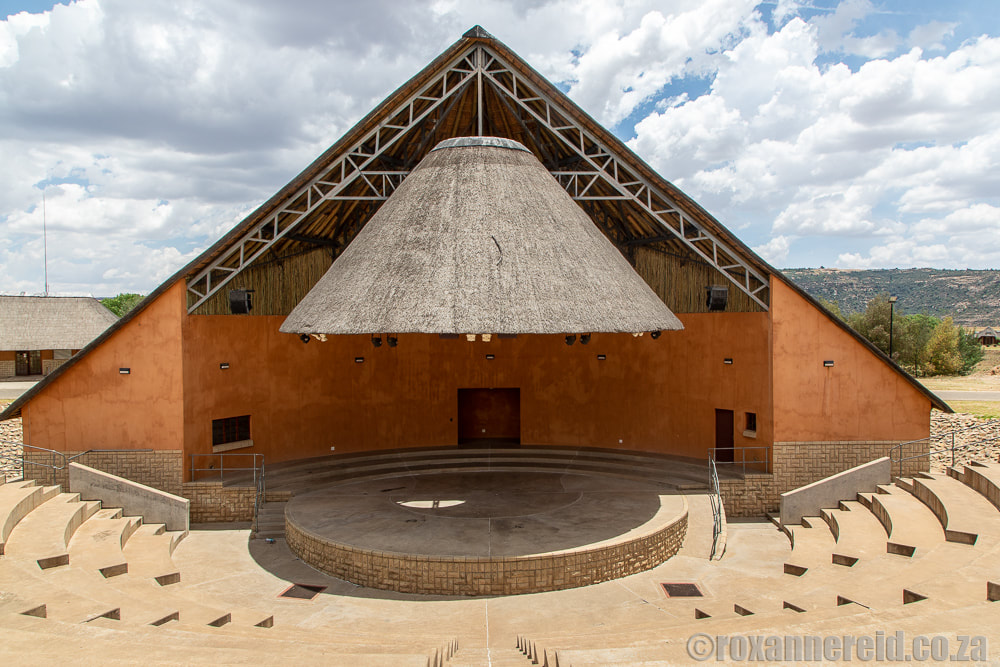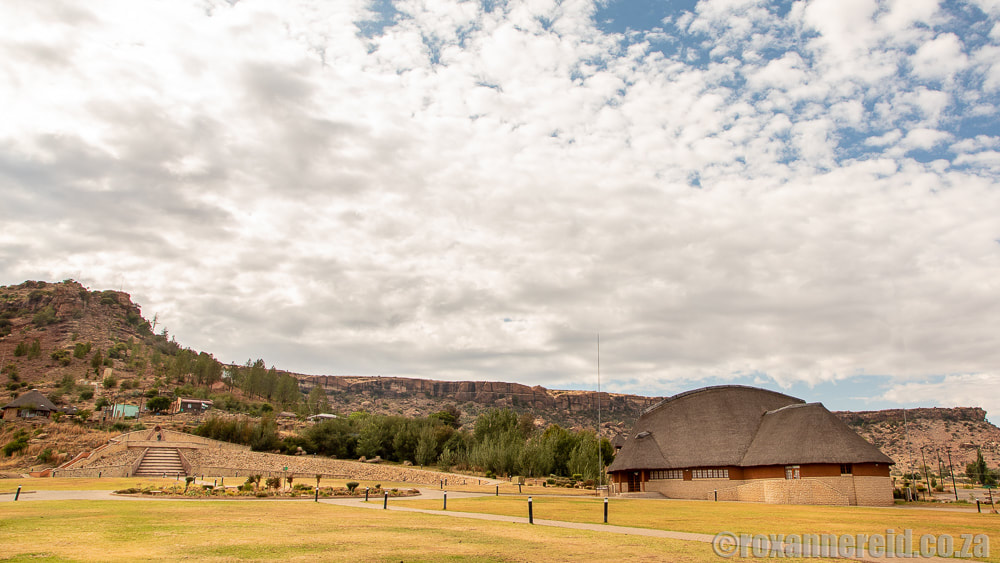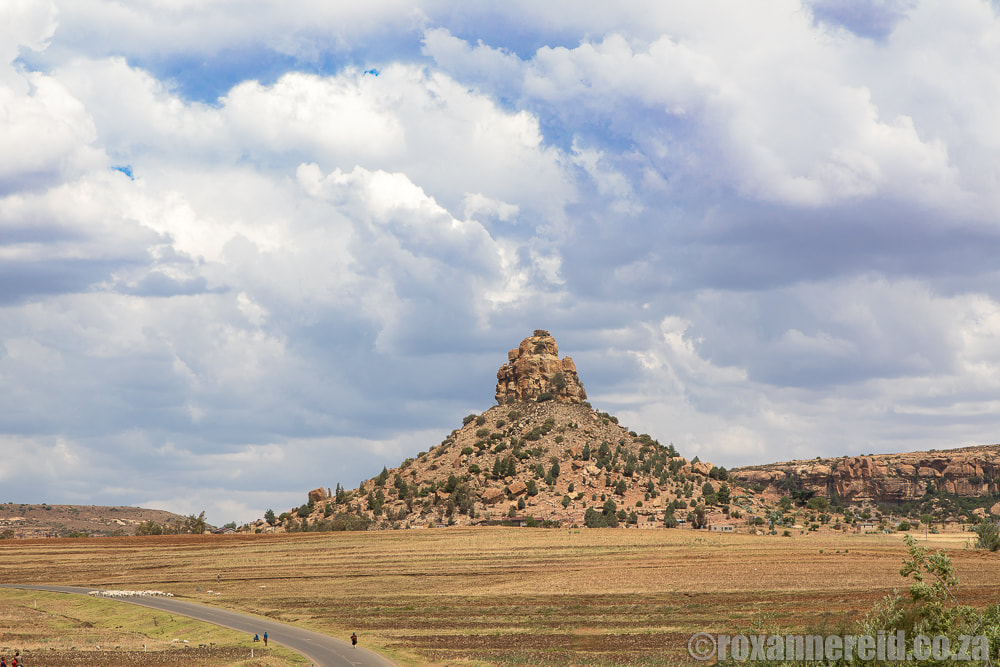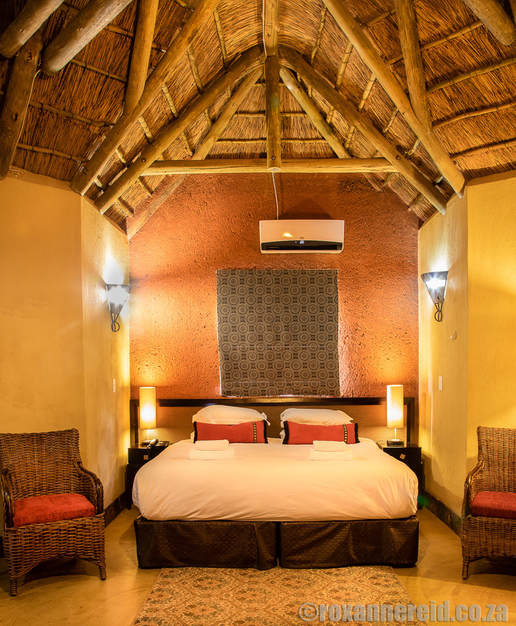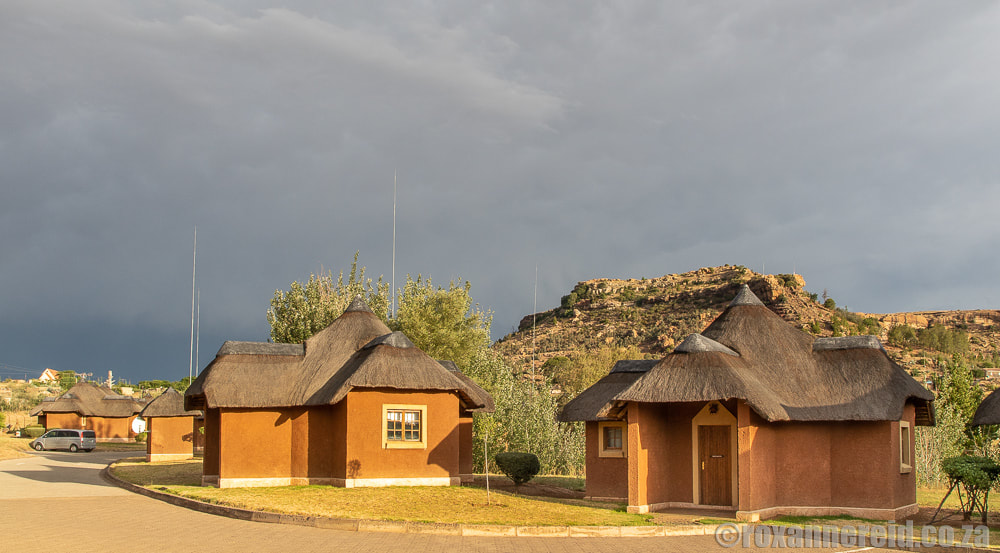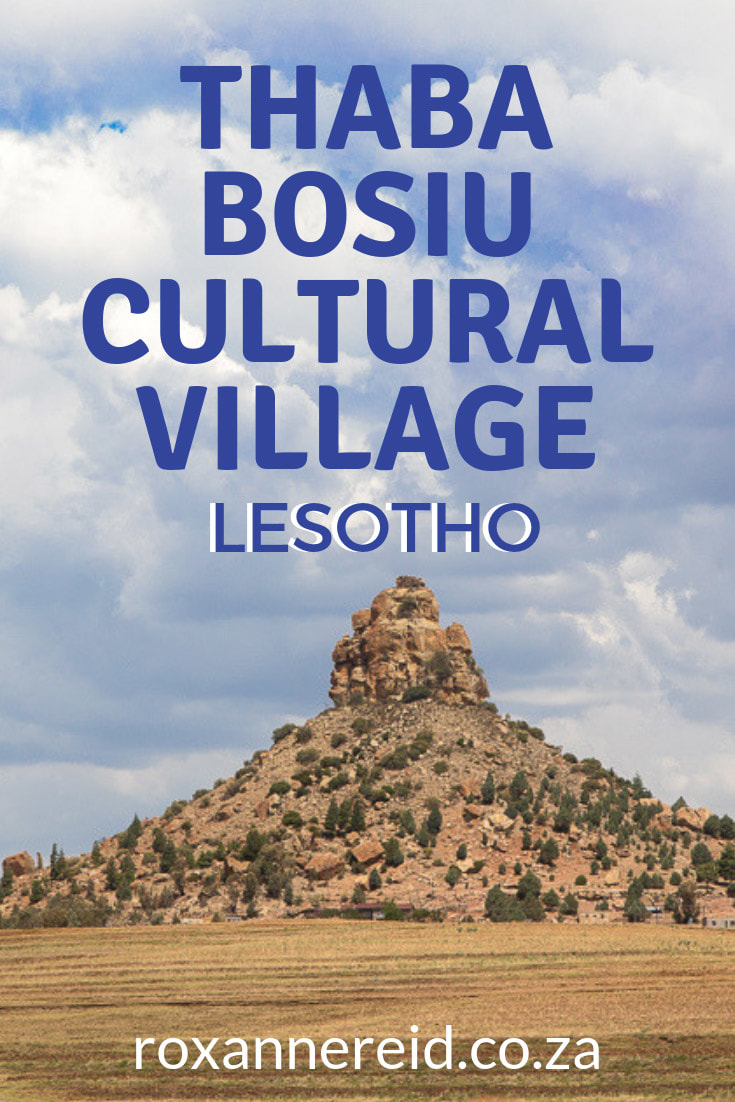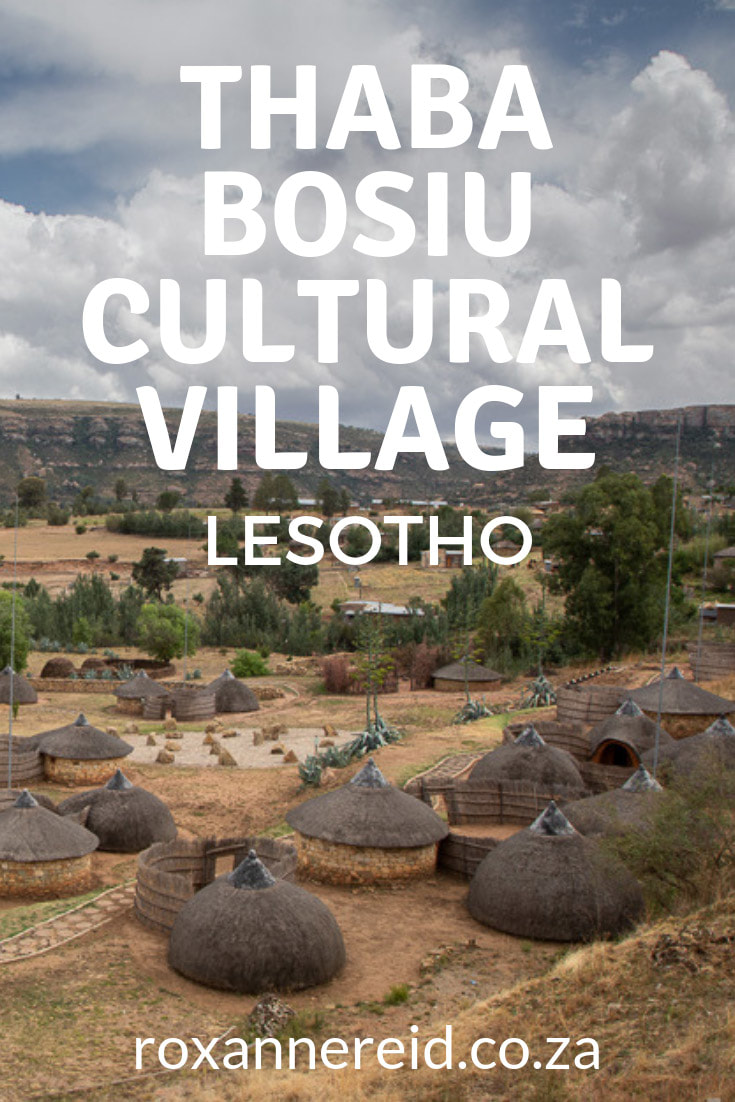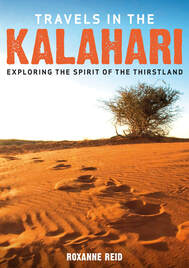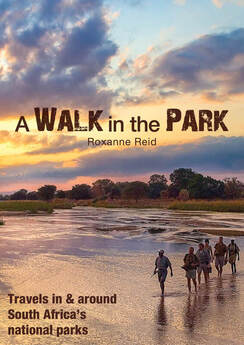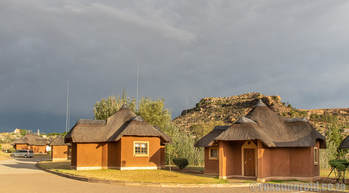
Thaba Bosiu, 24km from Lesotho’s capital of Maseru, is a national monument for its historical significance as the birthplace of the Basotho people. At the foot of the mountain is a place no visitor to the tiny landlocked country should miss. Find out why to visit Thaba Bosiu Cultural Village in Lesotho.
Monument
Centrepiece of the Thaba Bosiu Cultural Village is a monument to Moshoeshoe I, a larger-than-life statue that looks out over the whole village, its circular landscaping and paths, its museum, traditional village, amphitheatre and chalets. From the entrance, you approach the monument along a cement path inset with bare footprints so you feel as if you’re symbolically walking in Moshoeshoe’s footsteps.
We walked around the traditional village in the company of guide Edgar Moiloa Rantaoleng. He pointed out two styles of Basotho huts, one where the thatch goes all the way to the ground and another with stone walls and thatch roof. The Basotho learnt the second style in 1839 from David Webber, a deserter from the 72nd Seaforth Highlanders, who sought refuge at Thaba Bosiu. ‘Moshoeshoe said you must teach us something or you can’t stay here,’ Edgar smiled.
Another section of the traditional village showed the different styles of homes of the 19th century, for instance Zulu huts (some Zulu people were absorbed by the Basotho when fleeing from Dingane) or the corbelled stone huts of the Bushmen. Each had an info panel about the clan’s totem. For instance, the totem of Moshoeshoe’s clan, the Bakuena, was the crocodile, while the elephant was the totem of the Batloung, the vulture of the Bakhatla and the lion of the Bataung.
The museum
If you’re keen on history, a visit to the museum is a must. There isn’t much in the way of artefacts, but the info panels about the history, culture and customs of the Basotho will keep you fascinated for at least an hour or two. There’s an entrance fee (R60 or 60 Maloti in November 2018) even for those staying in the chalets.
The word Difaqane (also known as the Lifaqane or Mfecane) means ‘time of troubles’. Between 1815 and 1840, tens of thousands of people in Southern Africa died in wars or from drought and hunger, while many were displaced from their lands. Yet from when Moshoeshoe settled his people at Thaba Bosiu in 1824 until when he died in 1870 not a single attempt to capture the mountain succeeded, including attacks by Mzilikazi, the Koranna, the Griquas and the Boers from the neighbouring Orange Free State.
Perhaps one of Moshoeshoe’s most intriguing practices – certainly unusual for the times – was allowing young men of poor families to be treated as junior kinsmen by wealthier families. They were given cattle so they could pay the bride-price, use the cows to plough their fields and get milk to feed their families.
He even forgave them, saying, ‘You are the graves of my ancestors, you belong among us,’ before giving them a cow and a plot of land to build a house, effectively incorporating them into the Basotho nation. What a visionary leader he was, with his strategy of nation building, of gathering rather than destroying.
Don’t miss the interesting section on Basotho blankets and their history. There’s also some info on their unique designs, like the Kharetsa named after the spiral aloe (Lesotho’s national plant) or Victoria England, designed exclusively for kings, chiefs and their wives.
After our visit to the museum we stopped at the 800-seater amphitheatre for some singing and dancing. There are shows at 11:00 and 14:00 but I suggest you confirm with reception that you’re interested so they can assemble a group to perform.
Towering above it all is Thaba Bosiu, the mountain where Moshoeshoe created his fortress. It’s so historically and culturally important that it’s even on UNESCO’s tentative World Heritage list. Leave the Thaba Bosiu Cultural Village and turn left towards the Visitor Centre about 50m away on the left of the tar road. Here you can arrange a guide for a two-hour hike on the mountain to enjoy the views from the top and see some royal graves. Moshoeshoe and all but one of the Basotho kings are buried here. Be respectful and don’t venture where your guide says you’re not allowed.
As you come out of the Visitor Centre, turn left again instead of right back towards the Cultural Village. A little further down this road you’ll see Qiloane koppie on your right. If it looks familiar, that’s because it’s said to have been the inspiration for the conical Basotho hat. It even has the knobble on the top like the traditional hat.
To make the most of your visit to the area and all it has to offer, stay over in the Thaba Bosiu Cultural Village accommodation. There are about 40 really nice chalets with thatch roofs in Basotho style. Even the light fittings have Basotho panache, being shaped like the traditional conical hat.
Our open-plan chalet had a bed, a small table and chairs, TV, two armchairs and a kitchen with sink, fridge and stove. Note, though, that the rules say no preparing of food in the rooms, so it’s not self-catering and doesn’t come equipped for it. There is a restaurant on the property; you get a voucher for breakfast but have to pay extra for any lunches or dinners.
Like it? Pin this image!
Semonkong Lodge: how to fall in love with Lesotho
Maliba Lodge: a romantic and honeymoon getaway
3 Lesotho passes you have to drive, including Sani Pass
Copyright © Roxanne Reid - No words or photographs on this site may be used without permission from roxannereid.co.za
